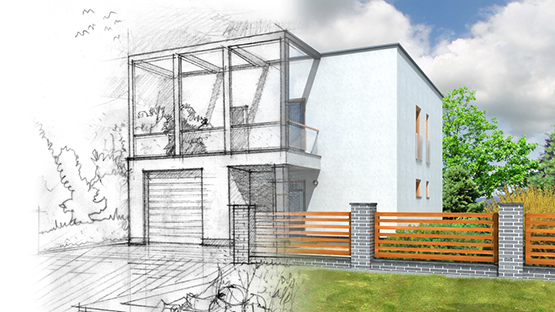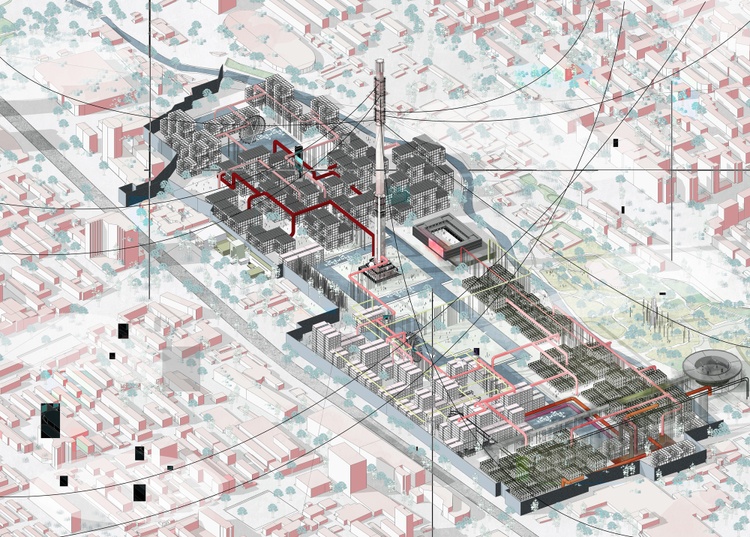The Influence of Technological Advancements on the Layout Practices of Contemporary Architects
The rapid development of technological devices has actually significantly reshaped the design landscape for contemporary designers, promoting extraordinary levels of development and sustainability. Exploring these characteristics discloses a nuanced interplay in between modern technology and typical design methodologies, prompting a better evaluation of what the future holds for architectural methods.
Development of Architectural Equipment
Exactly how have building tools transformed the style and building processes over the centuries? The evolution of architectural tools has actually significantly impacted the performance, precision, and creative thinking of layout and building. In ancient times, architects depend on basic instruments such as plumb bobs, gauging poles, and fundamental geometry to produce structures. These devices laid the structure for very early architectural practice, permitting the building and construction of famous structures, albeit with limitations in precision and complexity.
With the development of the Renaissance, the introduction of the compass and the protractor noted an essential shift. These devices allowed architects to accomplish greater precision in their styles, facilitating the introduction of more detailed and in proportion structures (cda architects). The Industrial Transformation further reinvented architectural experiment the introduction of mechanized tools and materials, permitting larger and more ambitious tasks
In the 20th century, the growth of computer-aided design (CAD) software program transformed the landscape when again, providing designers with extraordinary abilities in modeling and visualization. Today, progressed tools such as Building Details Modeling (BIM) and parametric design software application proceed to push the limits of building development, making it possible for a more integrated technique to layout and construction processes.

Enhanced Collaboration in Style
As technology remains to progress, enhanced cooperation in style has come to be a foundation of modern building method. The integration of electronic tools such as Structure Information Modeling (BIM), cloud-based platforms, and advanced visualization software application has changed the method architects, designers, and stakeholders engage throughout the design procedure. These tools promote real-time communication, permitting teams to share concepts, modifications, and responses instantaneously, regardless of geographical place.
Moreover, digital reality (VIRTUAL REALITY) and augmented truth (AR) have more enriched collective initiatives by enabling immersive experiences that enable customers and employee to visualize jobs in an extra engaging way. This degree of interaction not only boosts understanding but likewise cultivates a sense of ownership amongst stakeholders, leading to more educated decision-making.
In addition, interdisciplinary collaboration has been structured with these technological improvements, making it possible for architects to work a lot more very closely with other professionals, such as metropolitan organizers and ecological consultants. The result is a much more natural strategy to design that considers different point of views and expertise. Ultimately, enhanced partnership in style is not simply a pattern; it is crucial for developing innovative, functional, and aesthetically pleasing straight from the source architecture in an increasingly complex world.
Sustainability Through Technology
Sustainability in architecture has increasingly become linked with technical technology, driving the sector towards ecologically accountable methods - cda architects. Contemporary designers are leveraging sophisticated technologies to minimize ecological influence while boosting the efficiency of buildings. One prominent example is the usage of Structure Info Modeling (BIM), which enables accurate planning and source allowance, minimizing waste during construction and advertising power effectiveness throughout a building's lifecycle
In addition, wise materials and energy-efficient systems are being integrated right into styles to optimize source usage. Technologies such as solar batteries and environment-friendly roof harness renewable resource resources, contributing to lowered carbon impacts. Additionally, the application of fabricated knowledge in design procedures enables engineers to replicate and analyze power usage, guiding choices toward even more sustainable results.
The integration of lasting technologies not only aligns with worldwide ecological objectives however additionally meets a raising demand from customers for eco-friendly options. As designers accept these innovations, the focus shifts towards producing areas that are not only aesthetically pleasing yet also functionally lasting, thereby redefining the standards of modern-day architecture. By doing this, innovation works as a catalyst for sustainability, enabling engineers to design buildings that respect and boost the native environment.
Challenges in Application
While technical advancements in architecture hold wonderful promise for improving sustainability, their application typically experiences considerable obstacles. One key obstacle is the steep knowing contour linked with brand-new modern technologies. Architects and construction experts may need substantial training to properly make use of advanced software and tools, which can delay project timelines and increase costs.
Additionally, the integration of emerging technologies, such as Building Information Modeling (BIM) and sustainable products, usually demands cooperation throughout multidisciplinary groups. This cooperation can be impeded by differences in know-how, operations, and interaction styles, resulting in potential conflicts and inadequacies.
Financial restraints additionally complicate the adoption of innovative modern technologies. Several building firms, particularly smaller sized ones, might lack the resources to spend in innovative tools, limiting their capacity to contend with larger companies that can pay for such investments.
Moreover, governing frameworks and building codes might not keep pace with technical developments, creating obscurity and prospective compliance problems. This challenge can inhibit designers from fully welcoming new modern technologies, as the danger of non-compliance may exceed the benefits. Addressing these application obstacles is important for the effective combination of technical advancements in modern building practices.
Future Fads in Design
The challenges related to the application of new modern technologies in architecture have motivated a reevaluation of future trends within the market. As engineers navigate problems such as sustainability, urbanization, and social equity, they are significantly adopting innovative innovations to boost design effectiveness and ecological efficiency.
One prominent trend is the combination of expert system (AI) in the design process. websites AI devices can Learn More Here assess vast datasets to inform style decisions, boosting both creative thinking and functionality. Building Info Modeling (BIM) continues to develop, allowing real-time partnership amongst stakeholders and assisting in structured job administration.
Sustainable style techniques are likewise acquiring momentum, with designers concentrating on adaptive reuse and regenerative design principles that decrease source intake and waste. The unification of wise products and sustainable energy sources will certainly better boost the durability of buildings in the face of climate adjustment.
In addition, the increase of parametric design enables even more tailored and context-sensitive architectural services. By harnessing these advancements, engineers are poised to create constructed atmospheres that not only resolve the instant needs of culture however also prepare for future difficulties, thus redefining the role of design in an ever-changing world.
Verdict
